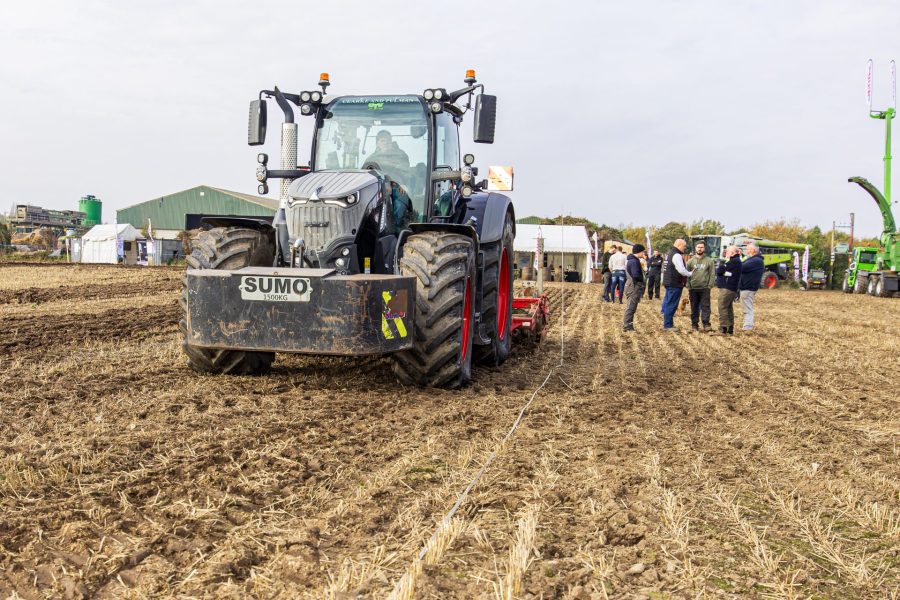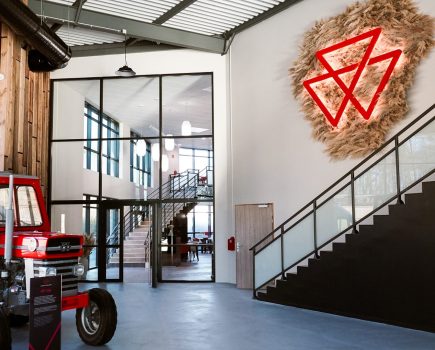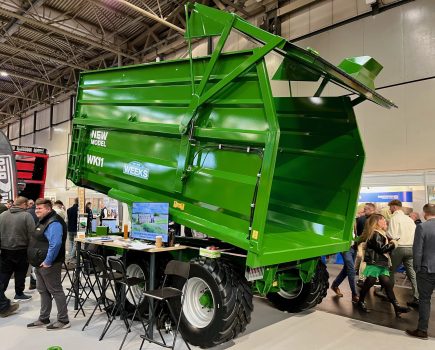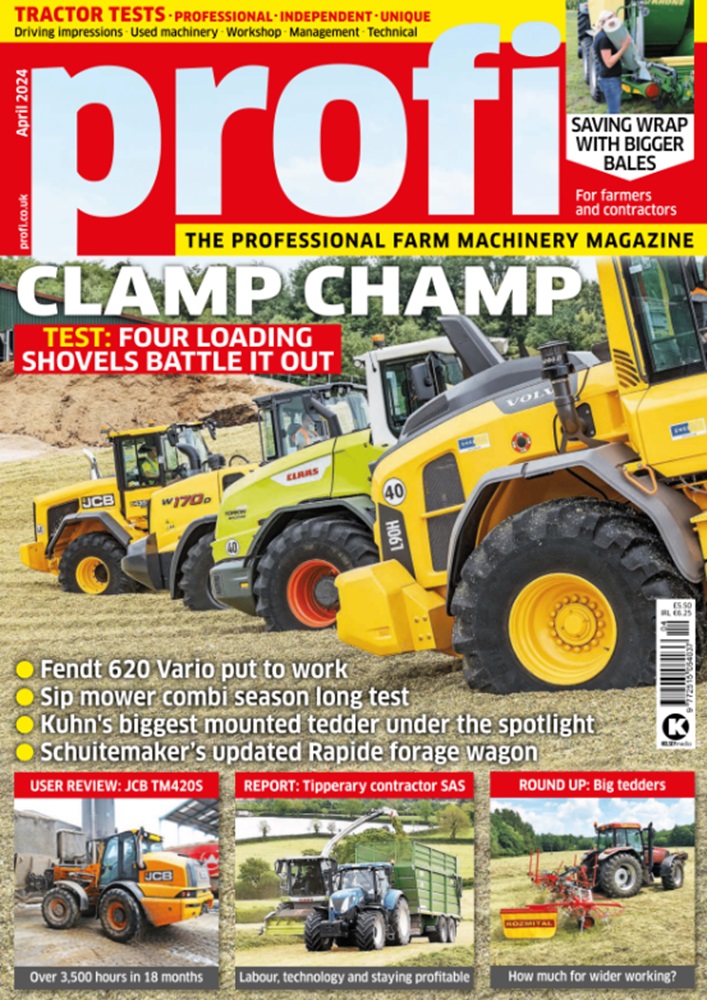Alliance have been among the familiar contenders in agricultural tyres for many years, they’ve recently launched a VF tyre, and chose social media man, Olly Harrison as a UK brand ambassador to raise their profile in the premium tyre sector.
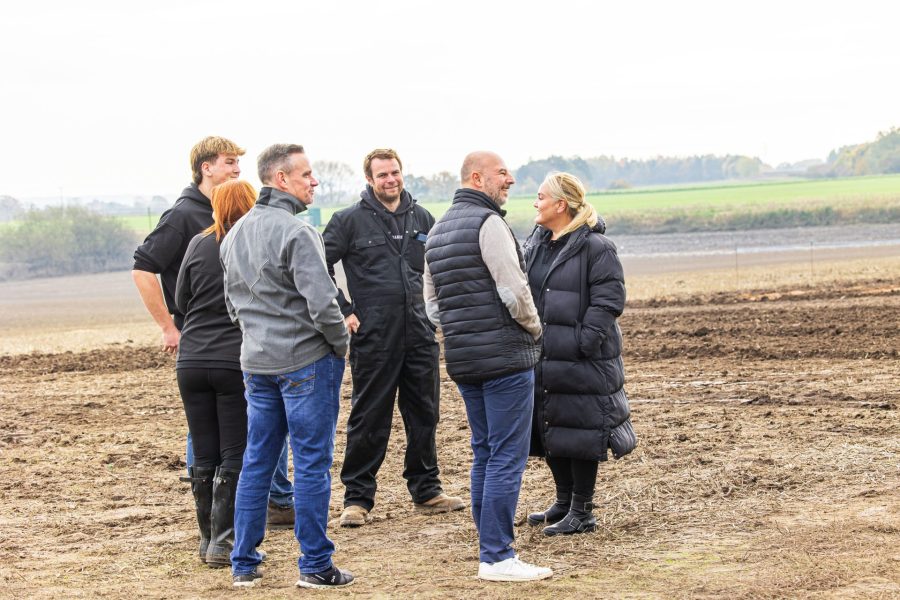
Many folks still see tyres as black and round, but with many tractor manufacturers starting to offer central tyre inflation systems (CTIS), the tide is turning toward an understanding of better efficiency and soil protection – if you take the time to set the tyre pressures and ballast correctly for the job you’re doing.
There are many compaction studies carried out, and if you want minimum compaction a track is undoubtedly the solution; there it’s said, now lets talk about tyres. You can research Joseph Boussinesq’s stress equations from 1885 or W.H Söhne examining point force effect in 1953 and read papers on compaction and soil conditions til the cows come home. But 99% of the decision makers on farms know 1) you don’t always get to choose when you work, and 2) compaction is bad for the land, see point 1. So weather aside, and perfect field conditions assumed, why spend 30% more on a Very High Flexion (VF) tyre?
What do you get from a VF tyre?
If it’s correctly set up? Ideally a long footprint, the Alliance VF is a steel belted radial, and the design concept is to make a longer footprint, not wider as the inflation pressure is reduced; as wider isn’t necessarily better when it comes to compaction. Olly Harrison recently took delivery of two Fendt 728’s with Variogrip, the firm’s inhouse CTIS system, the field specialists from Alliance had set up a test track to show off what the system, equipped with the right tyre could do.
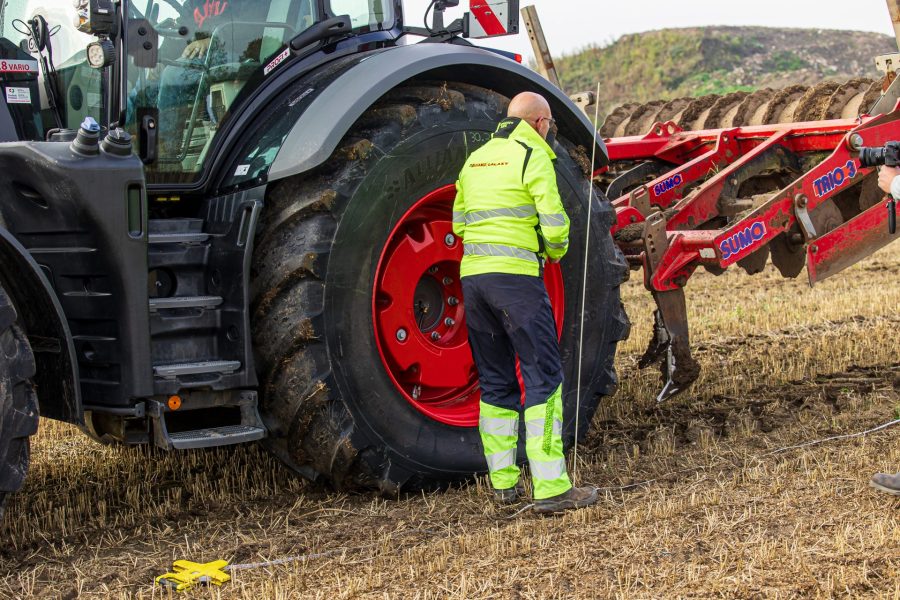
The tyres were 372 Agriflex+ 710/70 R42 and 600/70 R30 with a 1,500kg weight on the front, and a seven leg Sumo flat lift hitched on. The test was fairly simple, one run of a ten metre track with the implement out of the ground, and one run with it engaged.
To set out the understanding of the wheel slip test, and what it’s trying to demonstrate, the figures are for heavy cultivations, soil engaging equipment. Yes a longer footprint will benefit compaction stats on almost any land, but slip shouldn’t be used as a performance metric everywhere. The test was to demonstrate that to fully utilise the tractor’s power you actually want wheel slip, the “sweet spot” As Fredrick Zandman explained is 10%. The test demonstrated there was bang on 10% slip with the tractor, implement and tyres set up correctly. At that slip rate it’s deemed that your tyre cleaning, rate of work, power and fuel use is optimal.
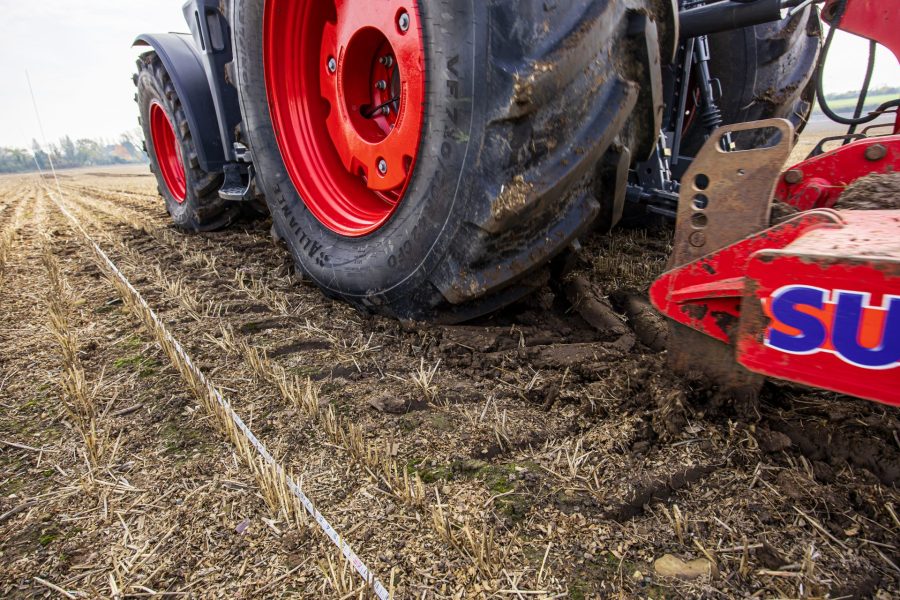
Alliance claim the VF tyre at field pressure has 30% longer footprint than a standard radial, which also correlates to a metre gained in distance, over 100m under the same conditions versus a standard tyre. When tested in Denmark Alliance say the tyres gave an 11% uplift in yield in a maize crop, which at the time of testing equated to €35/hectare gain. As well as yield gain, Alliance say there is a 30% fuel saving, and another critical point to note is that the Agriflex+ is about 30% more expensive than a stock radial. That’s a lot of 30’s, the message is that a VF will, if used correctly pay for itself over and over.
Other tests
The field specialists laid out a number of plots to demonstrate the benefits of a VF tyre and how setting the correct pressure can dramatically affect the profile. Probably the best visual was the sand pit, where the team had dug the pit, filled it with different coloured layers of sand, then carefully excavated it to show the compaction patterns of the VF and radial.
The VF set at it’s lowest pressure returned shallower surface tracks, and considerably reduced compaction into what would be sub-soil depth.
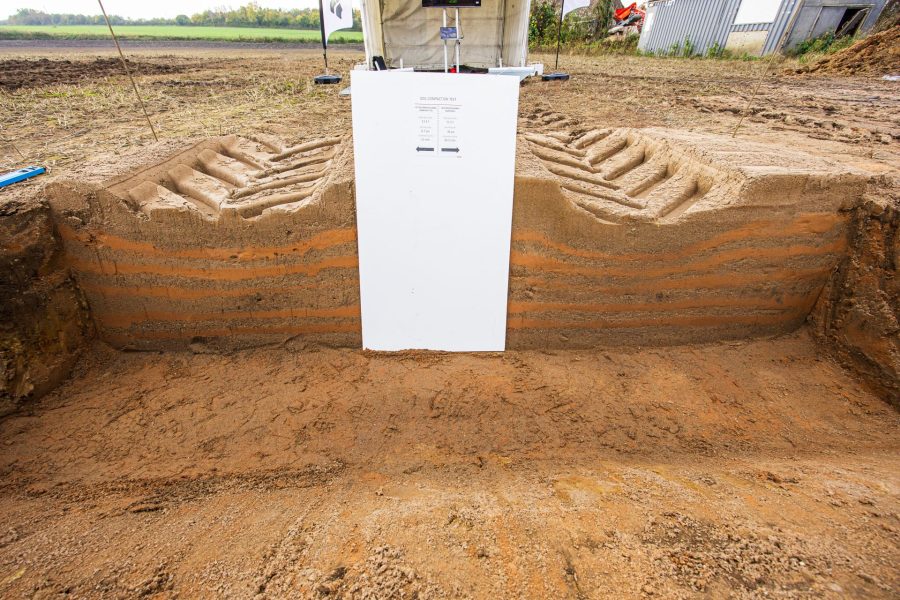
What does it mean in reality
We know that different soils require different treatment, and that moisture levels play a huge part in compaction. Axle weight is the factor that has increased dramatically over the last 20 years or so, it’s probably demonstrable that compaction has increased in parallel, kit ain’t getting smaller.
A general rule of thumb is that compaction goes down at half the surface pressure, to a depth equal to the tyres width, so a 710mm with a surface pressure of 1bar will transmit 0.5bar to 710mm deep. Well beyond most tillage operations, reducing surface pressure is key, as well as axle weight where possible, selecting the correct ballast for the job.
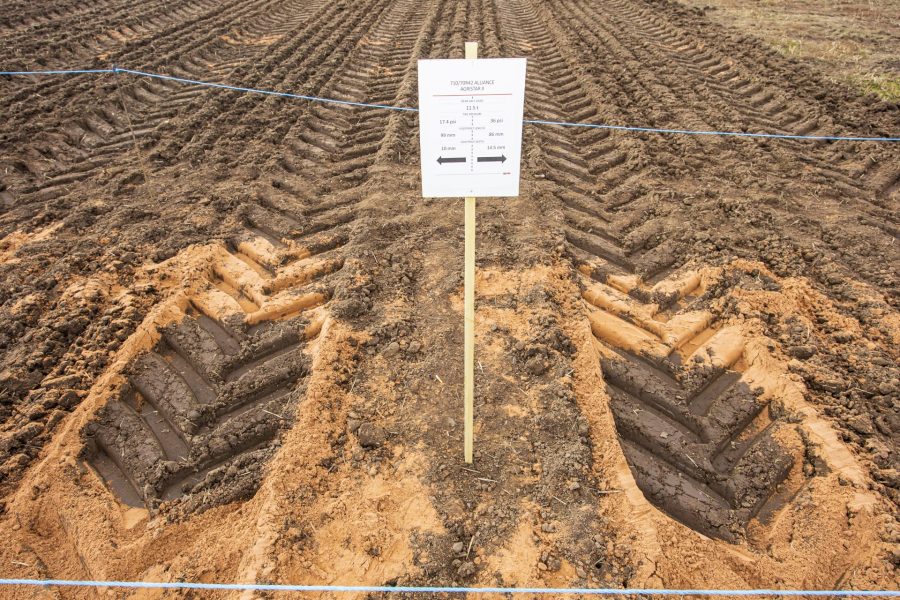
More wheel slip is as harmful as weight, as the shearing effect of the tyre slipping creates a pan from the slippage, and the mechanical action of the slip of the tyre compacts the soil. Less slippage is potentially an indicator of too much weight, which can be in the form of too large a tractor for the implement, or too much ballast, which then contributes to compaction.
This is why tracks with a long narrow footprint are the ideal in compaction, behind that a dual wheel set up delivers a favourable compaction pattern, and single tyres are actually the worst particularly wide singles, if they’re over weight spec because of the depth at which they deliver the compaction pattern, unfortunately there is no cure all solution.
Trailers
Alliance offer a varity of implement and trailer tyres, and the same rules apply here, two of Olly’s Richard Western trailers were loaded with 18t of gravel to demonstrate the effects. Which are not surprisingly the same as a tractor, Gerrit Vinkers explained the importance of selecting the right tyre for the job. Just like a tractor, there is no cure-all, if you want maximum permissible weight and speed, there is a choice the Alliance 590 was shown for this, and if you want best floatation properties, there is another the Agriflex+ 389XT. This is something we’re not the best at in the UK and Ireland, where the tendency to favour road is probably delivering an accumulative affect on our soils with compaction and increasing trailer sizes.
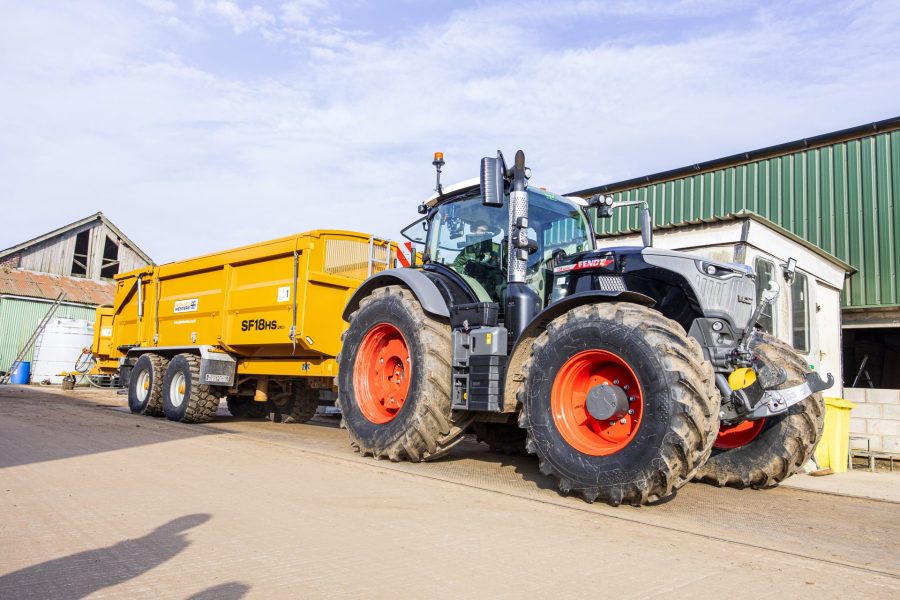
Showing the 590 at correct pressure for high road speed, there was little flex, The Agriflex 389XT on the other hand was shown with low pressure for floatation, a simple pair of sticks showed the significant increase in footprint length when set to their lowest pressure and a best transport speed setting. Gerrit showed a table of load, pressure and speed, and surprisingly to achieve best field settings with the right tyre, you can be as slow as 20km/hr, to get a good footprint, and not overheat the tyre (when they go blue), and also deliver good fuel efficiency.
When a tyre sinks, we know it takes more power to pull the trailer, because the tyre is effectively climbing out of the rut constantly, with good settings fuel economy can be improved, as well as compaction characteristics.

More new VF rubber
Though there weren’t any to see, Alliance did show some images of a new VF, the AgriFlex+ 373 is a Hybrid tyre, a 50/50 for want of a better description. Like other brands, Alliance recognised the increasing amount of road haulage done with tractors, their speed and how that impacts tyres. Agriflex+ 373 is a VF tyre, so it can work at low pressure, increasing traction and reducing compaction, but with a hard surface tread pattern. It features a closely spaced central tread, in a continuous bead to give good tread stability under load, with wider spaced lugs toward the shoulder for field traction.
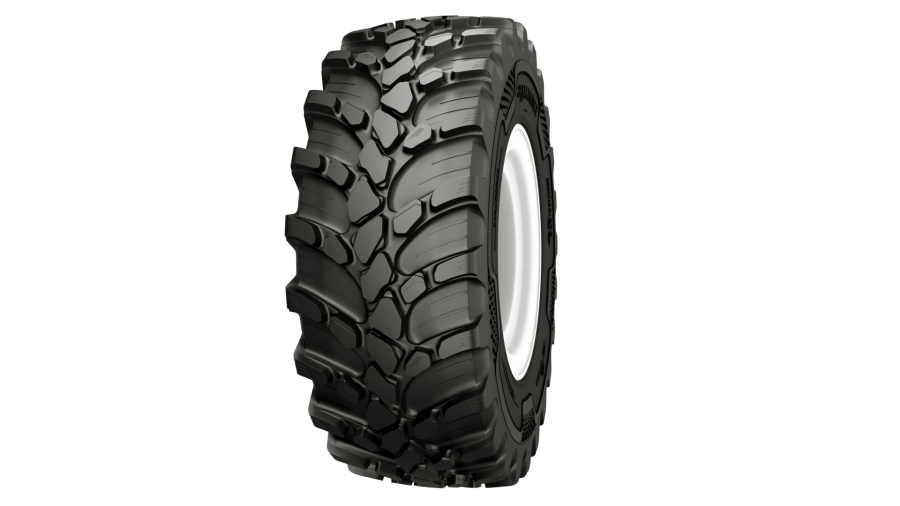
There are some other design features that should see the tyre clean well in the field, the Stratified Layer Technology gives more angles, supposedly retaining traction well into the wear of the tyre. So far sizes are only in 28 and 38 inch rims, 420, 480 and 520, 580 widths respectively, undoubtably wider versions will filter through.

A similar pattern will also be offered in an Increased Flexion (IF) a tyre for crop sprayers, currently the offerings are 320/90 R46, 380/90 R46 and 480/80 R50. Pitched toward those doing increased road miles, offering a more favourable wear characteristic than a conventional agricultural cleat. A VF option is also coming sizes are 230/95 R40 and 230/95 R38.

